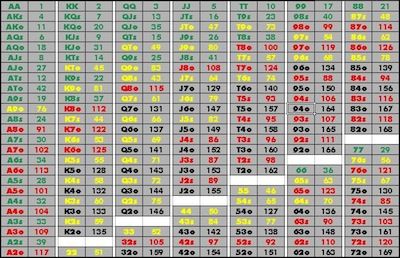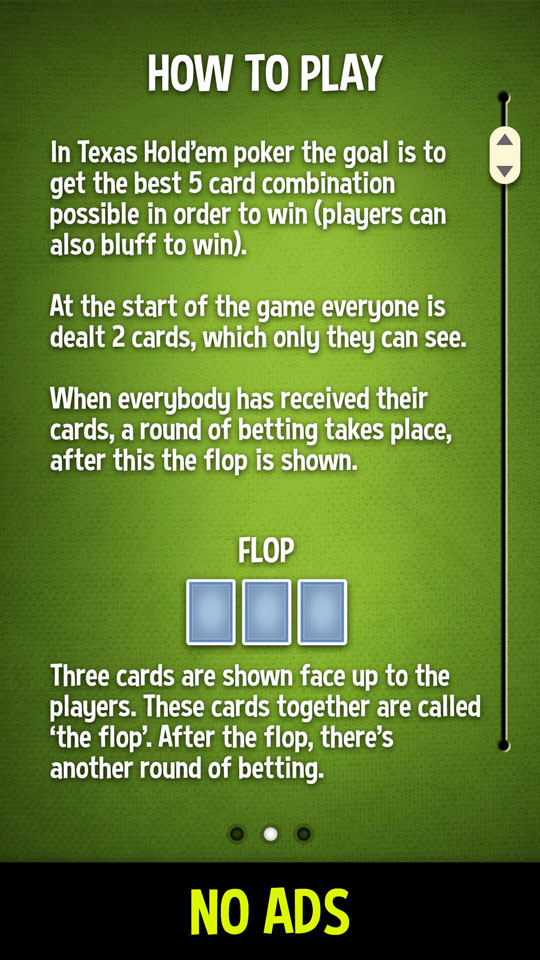Hold Em Hands
This grid compares the strength of a particular Texas hold'em hand (in this case ) against all other hands. Each square represents a pair of opponent cards, and the color represents the relative strength of these two hands — the redder the square, the more likely the opponent hand is to win. These probabilities were computed by enumerating all ≈1.3 trillion hands of heads-up Texas hold'em.
Mediocre hands are all a jumble of mediocre winning percentages. Some of the most common hands that many Hold’em players stick with like KQ, J-10, or Q-J all have similar middling winning percentages. What’s the Best Hold’em Hand? If you’re pre-flop the answer is easy: pocket aces. Outside of those.

Navigating the Grid
Opponent pair cards are organized along the main diagonal, in a band of 4x4 boxes. Opponent suited cards lie along other diagonals. The dark squares correspond to impossible hands, where a card is duplicated.

Tidbits

Best Hands In Texas Hold'em


Hold'em Hands Chart
If you are holding a pair, an opponent holding any higher pair has essentially the same advantage over you, regardless of the rank of the pair. In fact, compared to (say) a pair of 6s, a pair of 7s is slightly better than a pair of Aces.
While a pair of Aces is the strongest hand averaged over all opponent hands, the single strongest heads-up face-off is a pair of Kings vs a K+2 offsuit.